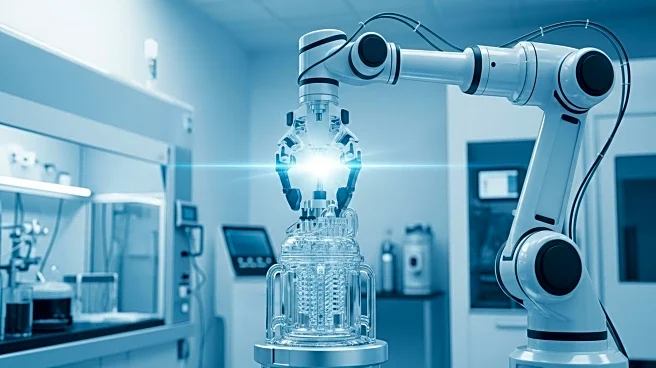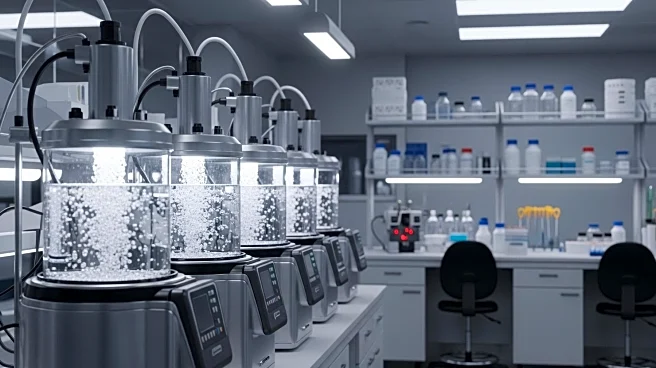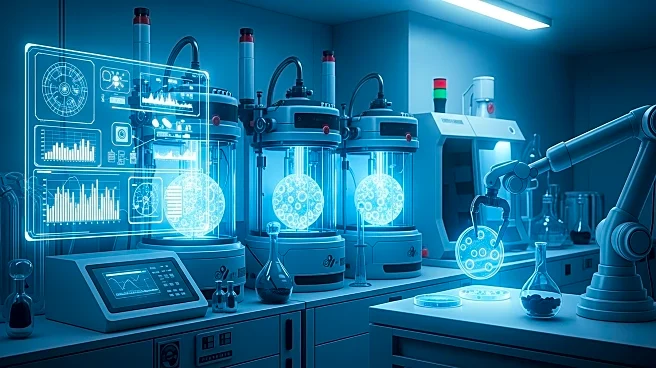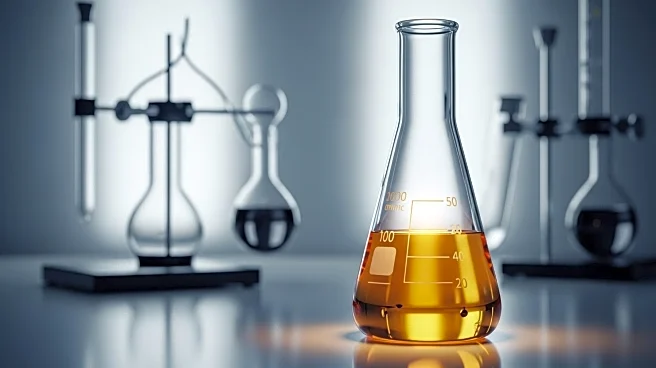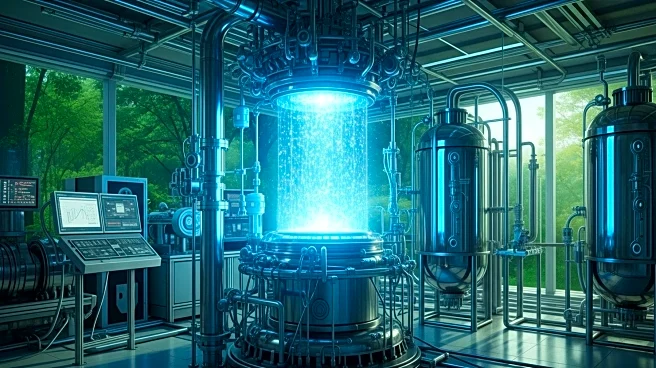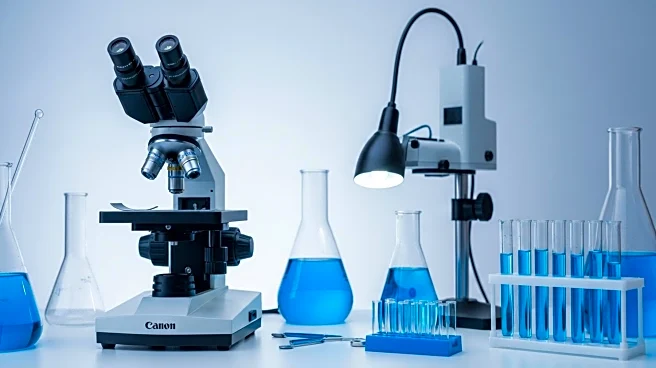What's Happening?
The bioprocessing industry is addressing significant downstream bottlenecks that occur during the purification and quality control stages of production. These bottlenecks are often exacerbated by upstream improvements, leading to challenges in maintaining efficiency and product purity. Experts from companies like Cytiva and Thermo Fisher Scientific are identifying root causes of these bottlenecks, which typically arise from complexity intersecting with speed, workforce availability, material flow, and equipment performance. Solutions include capacity constraint analysis, scaling up resources, and utilizing newer resins and filters. Additionally, techniques such as value stream mapping (VSM) and time and motion studies are employed to optimize processes by reducing waste and maximizing efficiency. These strategies aim to ensure high recovery rates and purity levels, ultimately driving down costs and improving throughput.
Why It's Important?
Addressing downstream bottlenecks in bioprocessing is crucial for the production of various biotherapies, including gene therapy and RNA vaccines. Efficient purification processes are essential to ensure product quality and safety, particularly in removing immune-triggering molecules like endotoxins. By improving recovery rates and reducing bottlenecks, companies can produce more product quickly and cost-effectively, which is vital for meeting increasing demand and maintaining competitiveness in the biopharmaceutical industry. The implementation of lean management strategies and advanced purification technologies not only enhances operational efficiency but also supports the broader healthcare system by ensuring consistent and reliable production of therapeutic products.
What's Next?
The bioprocessing industry is likely to continue exploring innovative solutions to downstream bottlenecks, including automation of manual processes like chromatography column packing. Companies such as Cytiva are offering automated solutions to streamline these procedures, increasing reproducibility and yields. As demand for biotherapeutics grows, firms like Thermo Fisher are transitioning from batch-based approaches to dynamic, team-driven flow models to enhance throughput and coordination with quality testing. These advancements are expected to further stabilize production processes and improve consistency, ultimately benefiting the healthcare system by ensuring the availability of high-quality therapeutic products.
Beyond the Headlines
The ongoing efforts to address downstream bottlenecks in bioprocessing highlight the industry's commitment to continuous improvement and innovation. The application of lean management principles and advanced technologies not only optimizes production but also fosters a culture of efficiency and adaptability. As the biopharmaceutical landscape evolves, companies must remain agile in their approach to overcoming challenges, ensuring that they can meet the demands of a rapidly changing market. This focus on operational excellence and strategic resource management is essential for sustaining growth and maintaining a competitive edge in the global healthcare industry.

